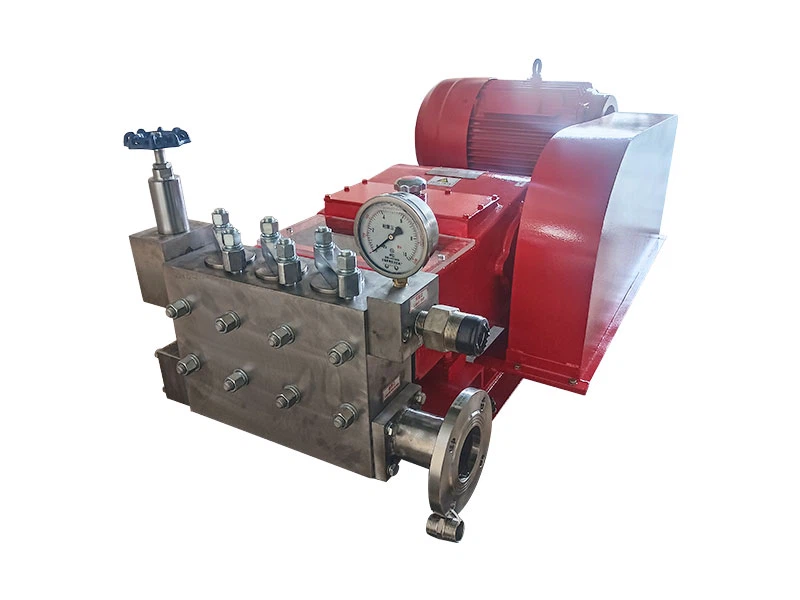Preparation
1. Safety first: Before replacing the seal, be sure to cut off the power supply of the high-pressure pump and ensure that the power supply will not be accidentally connected during the operation. At the same time, release the pressure in the pump to prevent accidents during the disassembly process.
2. Clean environment: Keep the working area clean to prevent dust, debris, etc. from entering the pump body, affecting the sealing effect or causing new faults.
3. Prepare suitable tools: Prepare the required tools, such as wrenches, screwdrivers, vernier calipers, etc., to ensure that the tools are complete and applicable to smoothly carry out disassembly and installation operations.
4. Confirm the seal model: Carefully check whether the model and specifications of the new seal are consistent with the original seal to ensure that it can accurately match the corresponding parts of the high-pressure pump.
Disassembly process
1. Marking and recording: When disassembling the pump cover, pump shaft, plunger and other related parts, mark and record their installation position and order so that they can be accurately reset during installation to avoid damage to the seal or deterioration of pump performance due to improper installation.
2. Careful operation: Use appropriate tools to remove the connecting bolts and nuts to avoid excessive force that may cause damage to the bolts or deformation of the pump body. For some tight-fitting parts, such as the seal ring on the shaft, special disassembly tools can be used to prevent damage to the surface of the seal installation part.
3. Check the parts: During the disassembly process, carefully check whether the parts that match the seal, such as the pump shaft and plunger surface, have defects such as wear, scratches, corrosion, etc. If there are any problems, these parts should be repaired or replaced first, otherwise the new seal may be damaged again due to poor fit.
Installation process
1. Clean the parts: Clean all the disassembled parts with a clean cloth or special cleaning agent to remove oil, impurities, rust, etc. on the surface. Especially for the seal installation part, ensure that the surface is smooth and free of foreign matter to ensure a close fit between the seal and the parts.
2. Correct installation: Install the new seal accurately to the corresponding position in the order of marking and recording. For some special seals, such as O-rings, lip seals, etc., pay attention to the installation direction and position to ensure that they are installed correctly. During installation, some grease can be applied appropriately so that the seal can be installed smoothly, but be careful to avoid grease contaminating the sealing surface.
3. Even tightening: When installing the pump cover, connecting bolts and other parts, tighten them evenly according to the specified torque and sequence to avoid deformation or damage of the seal due to uneven force. For some large or important sealing parts, a torque wrench can be used for tightening to ensure that the tightening force meets the requirements.
Testing and debugging
1. Static inspection: After the installation is completed, a static inspection is first performed to check whether the seal is installed in place, whether it is loose, displaced, etc. At the same time, check whether the connection of each component of the pump body is firm to ensure that there is no abnormality.
2. Pressure test: Before starting the high-pressure pump, perform a pressure test. The pressure of the pump can be slowly increased to observe whether there is leakage in the sealing part. If there is leakage, the machine should be stopped in time to find the cause. It may be caused by improper installation of the seal, impurities on the sealing surface or damage to the components, and it needs to be re-inspected and processed.
3. Trial run: After confirming that there is no leakage or other problems, a trial run is performed. During the trial run, closely observe the operating conditions of the pump, including whether the pressure, flow, temperature and other parameters are normal, and whether there is abnormal heating or leakage at the sealing part. If there is any abnormality, stop the machine immediately to check and eliminate the fault.

